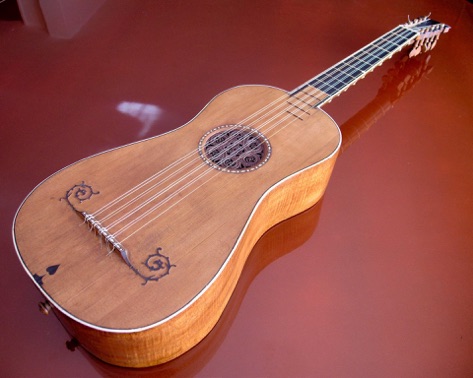In this video, Rolf Lislevand showcases a unique instrument by playing one of the five guitars still in existence manufactured by legendary instrument maker Antonio Stradivari.
In the clip, Lislevand performs Santiago de Murcia’s Tarantela.
The Sabionari guitar being played by Lislevand is the only one of the five which is still playable. It was manufactured in 1679. Documents exist showing it was sold in 1854, and the letter from that time says that a man named Sabionari, who gave his name to the guitar, had purchased the instrument from a member of the Stradivari family. The name of that family member is not known.

Lislevand is a world-renowned luthier who has performed at a number of international festivals. He has recorded works by Bach, among others, and has become well known for performing music from the Spanish Renaissance and the Middle Ages.
It is not known how many guitars Stradivari made during his career, but it is generally accepted that they were not his main focus. He is of course much better known for his violins.

Unless this was impacted more than normal by the lossy MP3 format, the guitar sounds like a banjo.. with too much locker room reverb.
Wikipedia (which lists all the existing Stradivari instruments, including one harp): “Currently the only playable Stradivari guitar. Contemporary to the early painted violins “Sunrise” and “Hellier”. Like many other baroque guitars, it had been redesigned to follow the instrumental practice at the beginning of the 19th century. Recently it was restored by Lorenzo Frignani to the original baroque configuration with five-course strings.”
[187]
https://en.wikipedia.org/wiki/List_of_Stradivarius_instruments
More cowbell
This guitar was not designed for a 440Hz A, what has it been tuned to? And what are the nut width and scale length?
Wish he played AC/DC’s “Thinderstruck” on it. Would be awesome to hear!
Nice lutenizing, and equally impressive leg-crossing.
He missed a note…..
Beautiful…..thankyou John for posting….love…
Has this instrument ever been strung with steel strings?
Beautiful. Reminds me of 1 of my fav movies..”THE RED VIOLIN”.
Loved it! Please..bring this guitar and brilliant player together in a majestic outdoor theater..perhaps Red Rocks or other beautiful place and play..just play..with love and awareness of the history of the instrument. I will gladly pay to come or purchase the video.
A luthier is also able to be a lutenist! The logic of this instrument being made by Antonio Stradivari because it was “purchased from a member of the Stradivari family” raises the question of verification. Are there similarities among the other four or did Antonio also purchase guitars?
I knew the other instruments were known for their sound quality, but this is the best sound I’ve ever heard from a Guitar.
Wonderful tone and projection for such a small body. Great playing too!
The Sabionari guitar that goes back to 1679!
Ahhh, that nothin! I had a Silvertone guitar that went all the way back to Sears and Robucks on the 12th
Wikipedia:
A luthier (/ˈluːtiər/ LOO-ti-ər)[1] builds and repairs string instruments that have a neck and a sound box. The word “luthier” is originally French and comes from the French word for lute. The term was originally used for makers of lutes, but it came to be used already in French for makers of most bowed and plucked stringed instruments such as members of the violin family (including violas, cellos, and double basses) and guitars. Luthiers however do not make harps or pianos; these require different skills and construction methods because their strings are secured to a frame.
That small guitar has amazing tone and projection for it’s size. Just like it’s cousin the Stradivari Violin. I wonder what the going price is for it?
“He is of course much better known for his violins.” Yes, you might say that!
Too much reverb. record it in a dry room. use a better mic.
A luthier is someone who makes stringed instruments. Rolf Lislevand is a lutenist.
Fantastic, Next time make him play the whole piece!!
For being nearly 350 years old, it sure sounds pretty good.
Fascinating. It is a wonder that little guitar has remained playable. By the way, a luthier is one who builds the instruments. Mr. Lislevand is a lutenist.